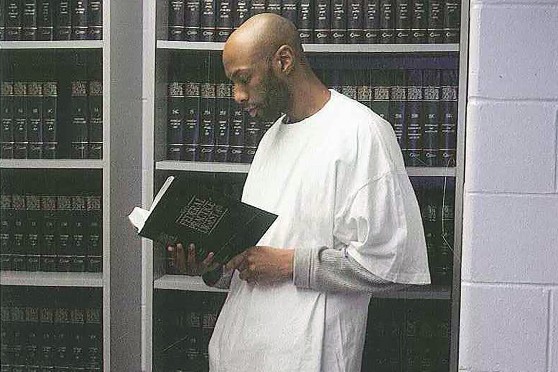Trump administration carries out 13th and final federal execution
By Hailey Fuchs
WASHINGTON — The Trump administration executed Dustin Higgs early Saturday (16) for his part in a triple murder in 1996, marking the 13th and final scheduled federal execution under President Donald Trump.
Aided by a conservative majority on the Supreme Court, Trump revived federal capital punishment in July after a 17-year hiatus, a stark contrast with the waning public support during that period for the death penalty.
Higgs could be the last person put to death by the federal government for some time. President-elect Joe Biden, who will be inaugurated Wednesday (20), has said he is opposed to the death penalty and has pledged that he will work to pass legislation ending capital punishment at the federal level.
In 2019, the attorney general at the time, William Barr, announced the Trump administration’s intention to resume executions of federal death row inmates using the lethal injection of a single drug, pentobarbital. Legal challenges briefly blocked those efforts.
In June, the Supreme Court cleared the way for the government to proceed, and the administration moved quickly to execute more than a dozen prisoners, sometimes scheduling two, three or even four at a time. Twice, the government carried out three executions in less than a week.
Higgs was pronounced dead at 1:23 a.m. at the federal correctional complex in Terre Haute, Indiana, in accordance with the nine capital sentences recommended by a federal jury, according to the Bureau of Prisons.
On Friday (15) night, the Supreme Court voted 6-3 to clear the way for Higgs’ execution to proceed, with members of the more liberal wing dissenting. In a scathing written dissent, Justice Sonia Sotomayor accused the court of repeatedly sidestepping “its usual deliberative processes, often at the government’s request,” allowing the Trump administration to proceed “with an unprecedented, breakneck timetable of executions.”
“This is not justice,” she wrote. “After waiting almost two decades to resume federal executions, the government should have proceeded with some measure of restraint to ensure it did so lawfully. When it did not, this court should have. It has not.”
The Justice Department also finalized a rule last year that would allow the government to use alternate methods of execution, including death by electrocution or firing squad.
Higgs’ execution was the third in four days, after the administration executed Lisa Montgomery, the only woman on federal death row, on Wednesday (13) and Corey Johnson on Thursday (14).
Higgs’ case stemmed from an evening in 1996 when he and two other men drove from Higgs’ apartment in Laurel, Maryland, to Washington, the Justice Department said. They picked up three women — Tamika Black, Mishann Chinn and Tanji Jackson — and, after stopping at a liquor store, returned to Higgs’ apartment to drink alcohol and listen to music. Early the next day, Higgs and Jackson began to argue, prompting Jackson to grab a knife. One of the men, Willis Haynes, broke up the fight.
Still angered, Jackson left the apartment with the other women, making a threat as she exited, and appeared to take note of Higgs’ license plate, according to a court filing from the Justice Department. Higgs grabbed a firearm from a drawer, and the three men met up with the women outside. The women got in the men’s car, apparently promised that they would be driven home, but instead, Higgs drove to a secluded area in the Patuxent Research Refuge, which is federal property.
Higgs’ defence team disputes what happened next. The Justice Department said Higgs ordered the women out of the vehicle, gave the gun to Haynes and instructed him to kill them. Haynes then fatally shot each of the women. Higgs’ lawyers argued that the evidence supporting the theory that Higgs ordered the killings was dubious.
“I’d like to say I am an innocent man,” Higgs said before the lethal injection began, according to a report from a journalist in attendance. “I did not order the murders.”
Victor Gloria, the third man, agreed to cooperate with the government’s murder case after he was arrested in 1998 on federal drug charges. He pleaded guilty to being an accessory after the fact to the murders and received 84 months in prison with three years’ supervised release.
Haynes, whose jury failed to reach a unanimous verdict on the death penalty, received life in prison without the possibility of release.
But Higgs was sentenced to death, a punishment that his lawyers argued was “arbitrary and inequitable” compared with that of the man who shot the gun. His defence team pointed to a declaration that Haynes signed years after the crime in which he claimed that Higgs did not threaten him nor make him do anything. Haynes claimed he shot the women because he feared for Higgs’ life.
In a statement provided by the Bureau of Prisons, Jackson’s sister said that the news of Higgs’ execution date brought “mixed emotions.” His family is now going through the same pain hers experienced, she added.
“On one hand, I felt we were finally going to get justice, but on the other, I felt sad for your family,” she said. “When the day is over, your death will not bring my sister and the other victims back. This is not closure, this is the consequence of your actions.”
Trump was not receptive to pleas for leniency for Higgs or for any of the 12 inmates who were executed before him. The Supreme Court — which now has three Trump appointees, solidifying its conservative majority — also denied his requests for reprieve. Shortly before Higgs’ execution, the justices vacated a stay from the 4th Circuit that had temporarily blocked the government.
-New York Times


